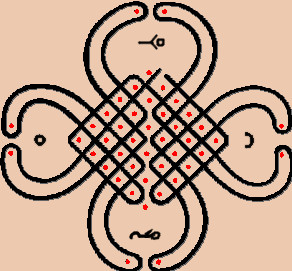Lusona on:
[Wikipedia]
[Google]
[Amazon]
 Sona () drawing is an
Sona () drawing is an
 Sona () drawing is an
Sona () drawing is an ideographic
An ideogram or ideograph (from Greek "idea" and "to write") is a graphic symbol that represents an idea or concept, independent of any particular language, and specific words or phrases. Some ideograms are comprehensible only by familiari ...
tradition known across eastern Angola
, national_anthem = " Angola Avante"()
, image_map =
, map_caption =
, capital = Luanda
, religion =
, religion_year = 2020
, religion_ref =
, coordina ...
, northwestern Zambia
Zambia (), officially the Republic of Zambia, is a landlocked country at the crossroads of Central, Southern and East Africa, although it is typically referred to as being in Southern Africa at its most central point. Its neighbours are t ...
and adjacent areas of the Democratic Republic of the Congo
The Democratic Republic of the Congo (french: République démocratique du Congo (RDC), colloquially "La RDC" ), informally Congo-Kinshasa, DR Congo, the DRC, the DROC, or the Congo, and formerly and also colloquially Zaire, is a country in ...
, and is mainly practiced by the Chokwe and Luchazi peoples. These ideographs function as mnemonic devices to help remember proverbs, fables, games, riddles and animals, and to transmit knowledge.
History
Origins
According to ethnologistGerhard Kubik
Gerhard Kubik (born 10 December 1934) is an Austrian music ethnologist from Vienna. He studied ethnology, musicology and African languages at the University of Vienna. He published his doctoral dissertation in 1971 and achieved habilitation in ...
, this tradition must be ancient and certainly pre-colonial, as observers independently collected the same ideographs among peoples separated for generations. Additionally, early petroglyphs
A petroglyph is an image created by removing part of a rock surface by incising, picking, carving, or abrading, as a form of rock art. Outside North America, scholars often use terms such as "carving", "engraving", or other descriptions ...
from the Upper Zambezi area in Angola and Citundu-Hulu in the Moçâmedes Desert exhibit structural similarities with lusona ideographs. For example, a lusona known as , and a lusona showing interlaced loops known as , both appear in the rock arts of the Upper Zambezi recorded by José Redinha.
Those petroglyphs date from a period between the 6th century BC and the 1st-century BC. It's possible that those petroglyphs and Sona ideographs are related, however there is no direct evidence that this is the case, other than the similarities and the geographic location.
Post-16th century
One of the most basic lusona, ''katuva vufwati'', sometimes appears on objects of trade carried by people in the Kingdoms of Matamba and Ndongo, that we can sometimes see depicted by the Italian missionary Antonio Cavazzi de Montecuccolo in watercolor drawings fromhis book
His or HIS may refer to:
Computing
* Hightech Information System, a Hong Kong graphics card company
* Honeywell Information Systems
* Hybrid intelligent system
* Microsoft Host Integration Server
Education
* Hangzhou International School, in ...
about those kingdoms.
Later, after the 20th century, various ethnographers and anthropologists would write on Sona ideographs, one of the first being Hermann Baumann in 1935 with his book "Lunda".
Usage
Sona ideographs are sometimes used as murals, and most of the time executed in the sand. To make them, drawing experts — after cleaning and smoothing the ground — would impress equidistant dots and draw a continuous line between them. The dots can represent trees, persons or animals, while the lines can represent paths, rivers, fences, walls, contours of a body, etc.Mathematical properties
80% of the ideographs are symmetric and 60% are mono-linear. They are an example of the use of a coordinate system and geometric algorithms.Geometric algorithms
Sona drawings can be classified by the algorithms used for their construction. Paulus Gerdes identified six algorithms, most commonly the "plaited-mat" algorithm, which seems to have been inspired by mat weaving.Chaining rules and theorems
Various studies suggest that the drawing experts knew specific rules of "chaining" and "elimination" relating to the systematic construction of monolinear figures. Studies suggest that the "drawing experts" who invented these rules knew why they were valid, and could prove in one way or another the validity of the theorems that these rules express. It is difficult to find accounts of theorems developed by the drawing experts to generalize specific patterns relating to dimension and monolinearity/polylinearity, as this tradition was secret and in extinction when it started to be recorded. However, the drawing experts possibly knew that rectangles with relatively prime dimensions give one-line drawings. This idea is supported by the fact that of the 30 smallest relatively prime rectangular shapes, 75% appears among the documented drawings. It is further possible that they knew that if a square of a dot is added to a one-line lusona, the lusona would still be mono-linear. It seems clear that they had experimentally discovered this fact for 2 X 2 squares.References
External links
* * * * * {{cite book, author=José Redinha, title=As Gravuras Rupestres Do Alto Zambeze E Primeira Tentativa Da Sua Interpretação. [With Illustrations, Maps and Plans.]., url=https://books.google.com/books?id=Cm70MgEACAAJ, year=1948 Chokwe African art Mnemonics Writing systems of Africa